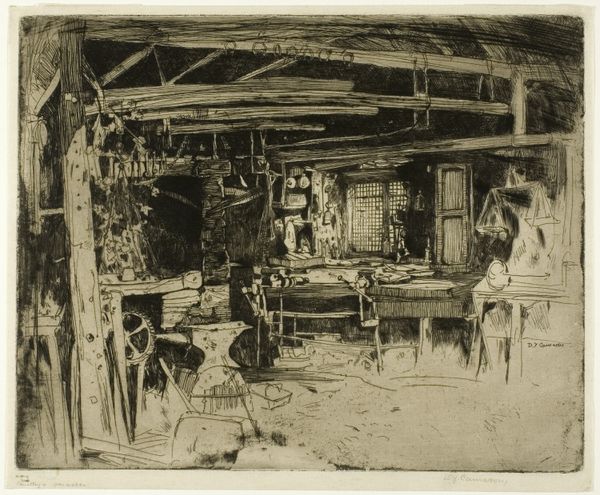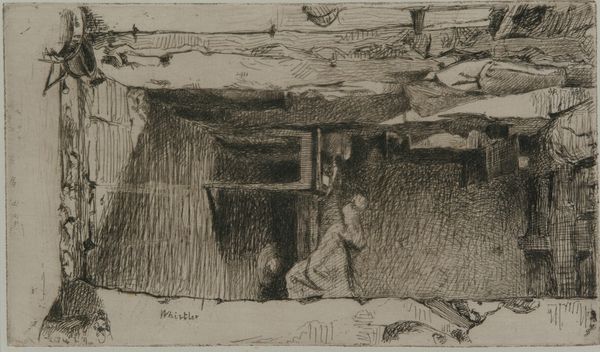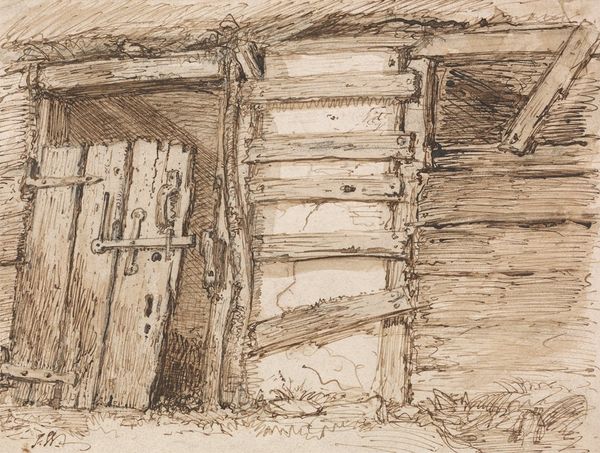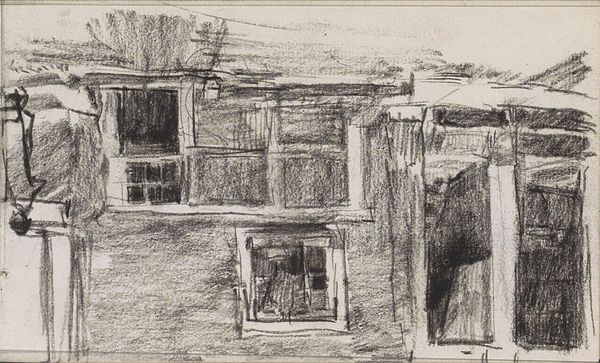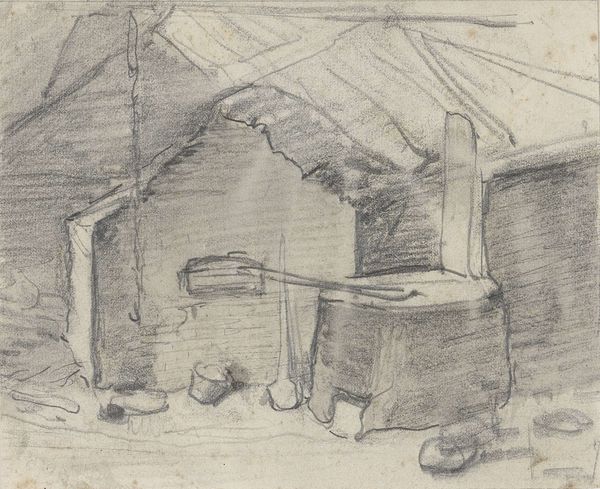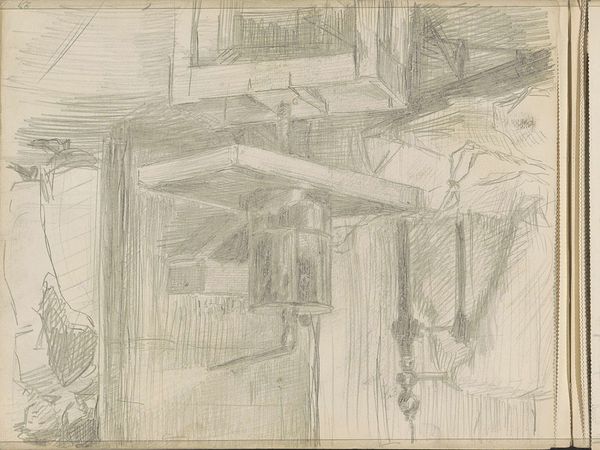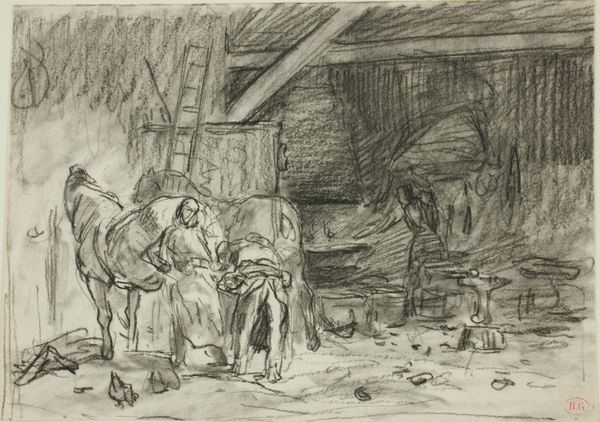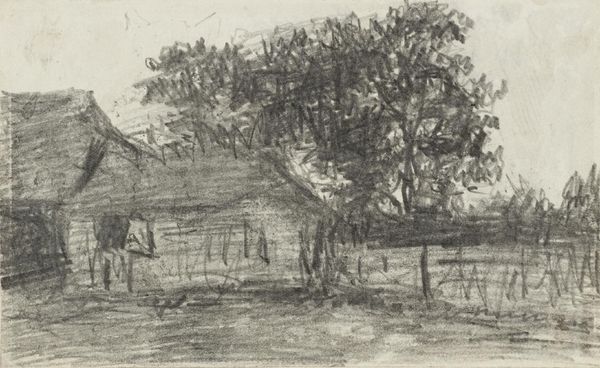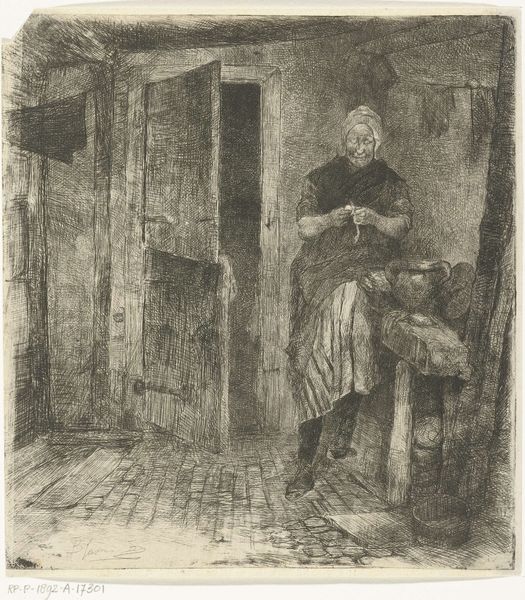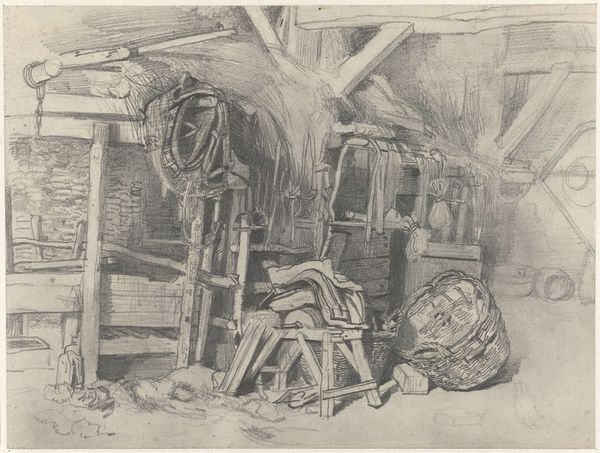
Copyright: Public Domain: Artvee
Curator: Look at the somber mood conjured up by this Whistler print. Editor: Indeed. This etching, completed around 1858-59, is titled "The Miser." It's a compelling example of Whistler’s early experimentation with the etching technique. But the name makes me think - miser, as in stingy? What's being conveyed here, beyond some dark interiority? Curator: Consider how the light interacts with the window's geometry, almost cruciform, casting a contemplative mood over the solitary figure looking outward. The shadow feels oppressive, as if an exterior presence threatens this isolated sanctuary. Light is used symbolically here as the miser’s last grasp on an uncorrupted, sacred self. Editor: Perhaps, but I read the shadowed figure not as clinging to sacredness, but as being enclosed by poverty. Whistler produced this etching during a period of great social inequality. Look how that large table dwarfs everything else, a sort of "Last Supper" table without a feast. Is he hoarding space, experience? He’s shut off, visually and, probably, economically. Curator: Notice also how the composition leads the eye inward. The items affixed to the upper left, perhaps utensils, are potent visual reminders of shared meals now past. Could these imply the true treasures he withholds – sustenance, connection? This image echoes cycles of loss, and what rituals can ease despair. Editor: That's an interesting counterpoint. And in this context, it points out what this individual cannot or will not participate in. We could even view the composition of the table and figure as symbols that reinforce social alienation, of individuals and a class separated by wealth, resources, power. Curator: A powerful reading, emphasizing the external forces at play on this person. It shifts our perception, revealing nuances of social injustice alongside personal reflection. Editor: Absolutely. Viewing artwork as a dialogue with past struggles is necessary work that allows a clearer understanding of ourselves. It provides both empathy and strategies. Curator: Exactly! Perhaps both approaches are helpful. Appreciating the aesthetic craft—and probing at the piece’s relationship to its broader cultural moment opens paths to layered insights.
Comments
No comments
Be the first to comment and join the conversation on the ultimate creative platform.
